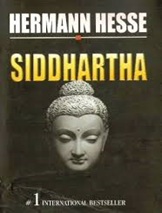
Siddhartha is a 1922 novelette by Hermann Hesse, a German-Swiss poet and novelist awarded the Nobel Prize for Literature in 1946. It explores the spiritual quest of an Indian young man named Siddhartha during the time of the Gautama Buddha. Lyrical and philosophical, the book was influential during the 1960s as it rediscovered Oriental wisdom as an antidote to mechanistic civilization. In a certain sense, Siddhartha is a reflection of Hesse’s yearning for deliverance from the bondage of individuality. However, this keen searching doesn’t always meet with positive response in academia. The objections include Hess as an unintellectual guru, or Siddhartha as a false portrayal of Buddhism combined with Western individualism.
Almost one hundred years after its publication, is it still significant as it was in the last century? For spiritual seekers, different approaches to interpreting it yield rich fruits to taste and digest. We can read it as the spiritual journey of a mythological hero. Or, it is an allegory on human life as a whole from Buddhist perspective. Moreover, it is an illustration of Zen insight on life tinged with postmodern philosophy.
Siddhartha can be read as an archetypal hero’s quest, with the theory based on Joseph Campbell’s The Hero with a Thousand Faces and The Power of Myth. On one hand, Siddhartha’s journey conforms to the structure of the traditional hero’s adventure. It’s a cycle involving a going and a returning. On the other hand, his experiences represent the sufferings and redemption common to humanity. The enlightenment he got benefits all mankind, transcending the distinction of age, race or gender.
From Buddhist light, Siddhartha is every one of us afflicted with a samsaric existence yet blessed with the potential of liberation. His quest is not a unique experience belonging to a religious man. What he experiences is common to humanity with all the insatiable desires and disillusionment. He shares with all sentient beings the three poisons of greed, wrath and delusion. With the cultivation of such virtues as compassion and meditative stability, he is released from suffering and obtains eternal happiness.
Siddhartha has no lack of the deconstructive spirit of Zen Buddhism. Hesse’s creation of the Oriental sage doesn’t distort Buddhism; instead, it shines forth the wisdom of Zen. The ancient Eastern religion has a deconstructive view on truth and subjectivity. Truth is not transparent but elusive and inaccessible through the medium of language. Human subjectivity is not a free and autonomous entity but a dependent-arising construct subject to ceaseless changes. Buddhism is in league with postmodernism in the concepts on language and subjectivity. Both view language as a subjective means of communication incapable of conveying truth. Human subjectivity is regarded as a social construct without an inherent essence. It’s an unfixed entity in postmodern discourses, while in Buddhism, subjectivity is not only unfixed but empty. Buddhist emptiness is not nihilism as the surface meaning of the word suggests, but a philosophical concept to explain the arising of all phenomena in the universe. Once achieving Buddhahood, Siddhartha enacts Buddhist emptiness through the transformation of his countenances into different forms.
The Buddha nature is pervasive in the universe. It finds numerous incarnations through different personages, Siddhartha being one of them.



 留言列表
留言列表

